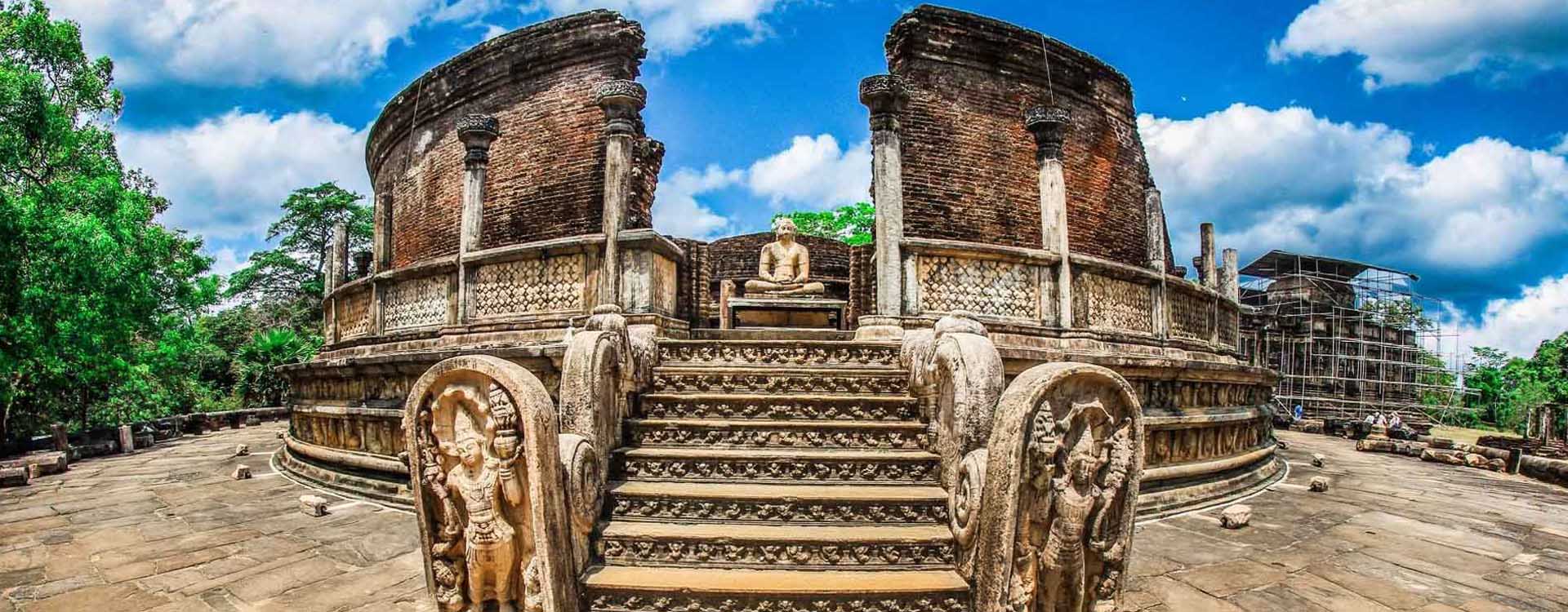Another UNESCO world heritage site, according to the chronicles, during the 12th century a prince of great metal and physical vigour hailing from the Rohana (Southern part of Sri Lanka) forced his way to the throne of Sri Lanka as King Prakrama Bahu the great. Establishing himself in Polonnaruwa, a capital worthy of authority and ambition of the ruler, he proceeded to show himself as a successful warrior and a great administrator, during which time he, through a medium of a dam nine miles long created the “The Sea of Parakrama” harvesting rain water to be used in the dry period of the year for cultivation purposes, carving the irrigation brilliance of Sri Lankan’s in stone, when most of Europe where still in darkness. In a period of prosperity with the objective of storing food many such projects were under taken some of which function even today.
Today vast ruins stand sentinel bearing witness in Polonnaruwa to his power and glory. The Sinhalese chronicle “kualamwanse” says that his palace was furnished with thousand chambers and seven stories in all, today only the ruins of ground floor remains with ten feet thick walls to support the six stories built on top of it.
Between the Palace and the garden lay the pool and towards north a pavilion called the council chamber, at the entrance the famous “moonstone” with its elaborate carvings of elephants, horses showing an internal possession around the central lotus flower, all this done by a great stone sculptor long forgotten except his work, walk up nine steps and you can picture yourself in the presence of the great king surrounded by his counsellors and chiefs, perhaps this is where he planned to send his navy to far-off Burma, organised expeditions against the Cholas of South India where the Sinhalese army won and set the Pandyan prince upon his father’s throne.



